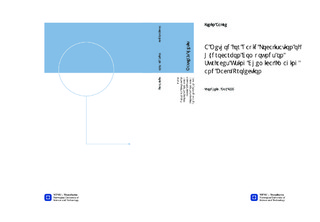A Method for Rapid Localisation of Hydrocarbon Compounds on Surfaces Using Chemical Imaging and Back-Projection
Master thesis
Permanent lenke
http://hdl.handle.net/11250/247839Utgivelsesdato
2013Metadata
Vis full innførselSamlinger
- Institutt for kjemi [1391]
Sammendrag
Discharges of unwanted chemicals into nature is a large and complex problem. Easy, fast and reliable methods for detecting these contaminants can be viewed as a first step towards a solution. Using a hyperspectral camera operating in the range 923-1665~nm, chemometric methods such as discriminant partial least squares regression (DPLSR) and k-nearest neighbours (k-NN) as well as various forms of preprocessing, models for detecting hydrocarbons on surfaces such as soil, sand, stone, humus and vegetation were developed. These surfaces were chosen as examples of naturally occurring surfaces where locating hydrocarbons can be interesting and useful. Paraffin were used as a hydrocarbon. For some of the DPLSR models, it proved to be of great importance for the error whether or not the spectra were normalised. This is probably due to the surfaces were uneven and that the penetration would differ from place to place. As surfaces in nature usually will not be smooth, it is natural to assume that this will have an even greater impact on natural backgrounds than in a laboratory environment. Smoothing of the data also improved many of the models. A simpler model, where data from only 16 of the 148 available wavelengths were used, turned out to give surprisingly good results on most surfaces. This model was less selective than the DPLSR models, and will also detect hydrocarbons other than paraffin. This is probably due to this model recognising the C-H-bond. The percentage error of the models varied widely between different surfaces. The different models have different strengths and weaknesses. Water caused false positives for some models and surfaces. A time series of images of soil with and without paraffin taken over a year, showed that a DPLSR model based on data from the first week had a low percentage error for all the images. However, data from other images indicate that time could have a greater impact for other surfaces than soil. DPLSR were able to distinguish between n-hexane and n-heptane on soil. This substantiates that it is possible to create a model that distinguishes between several different hydrocarbons.
